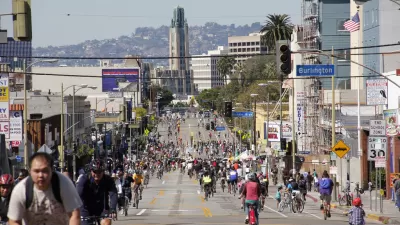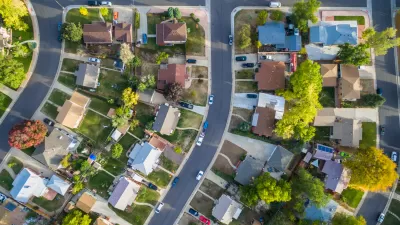The Gehl Institute's new Inclusive Healthy Places Framework is a free tool for evaluating and creating inclusive public places that support health equity.

How do we know when public space supports health, and when processes that shape public spaces are inclusive? Despite the growing evidence connecting place and health, design and physical activity, the natural environment and mental well-being, and more, there are few available resources to help planners and policymakers identify the kind of real evidence that is needed to help make decisions and fund public space projects that promote individual and community health and well-being. Similarly, though inclusion as a concept is well-discussed, there is no clear, shared working definition that can be tested and measured in design and public health practice.
The new report, Inclusive Health Places: A Guide to Inclusion & Health in Public Space. Learning Globally to Transform Locally, by Gehl Institute describes the Inclusive Healthy Places Framework, a free tool for evaluating and creating inclusive, healthy public places that support health equity.
However, not all public spaces are created or maintained equally or equitably. Nor are the neighborhoods, towns, or cities that surround them. In fact, health disparities and inequities often are correlated with such factors as limited access to and low quality of available public spaces, as well as lesser degrees of representation and participation in the process of shaping and maintaining public spaces.
About the Report
The Framework and supporting analysis presented in the Inclusive Healthy Places report and on this site represent a synthesis of research and expertise in public health and urban planning and design, with specific focus on the social determinants of health that can be viewed clearly through the lens of public space.
The Guiding Principles of Inclusive Healthy Places introduced in the report and Framework outline four distinct but interrelated areas in which public space intersects with health equity and inclusion:
Principle 1. Recognize community context by cultivating knowledge of the existing conditions, assets, and lived experiences that relate to health equity.
Principle 2. Support inclusion in the processes that shape public space by promoting civic trust, participation, and social capital.
Principle 3. Design and program public space for health equity by improving quality, enhancing access and safety, and inviting diversity.
Principle 4. Foster social resilience and capacity of local communities to engage with changes in place over time by promoting representation, agency, and stability.
FULL STORY: Inclusive Health Places: A Guide to Inclusion & Health in Public Space.

Planetizen Federal Action Tracker
A weekly monitor of how Trump’s orders and actions are impacting planners and planning in America.

San Francisco's School District Spent $105M To Build Affordable Housing for Teachers — And That's Just the Beginning
SFUSD joins a growing list of school districts using their land holdings to address housing affordability challenges faced by their own employees.

The Tiny, Adorable $7,000 Car Turning Japan Onto EVs
The single seat Mibot charges from a regular plug as quickly as an iPad, and is about half the price of an average EV.

Seattle's Plan for Adopting Driverless Cars
Equity, safety, accessibility and affordability are front of mind as the city prepares for robotaxis and other autonomous vehicles.

As Trump Phases Out FEMA, Is It Time to Flee the Floodplains?
With less federal funding available for disaster relief efforts, the need to relocate at-risk communities is more urgent than ever.

With Protected Lanes, 460% More People Commute by Bike
For those needing more ammo, more data proving what we already knew is here.
Urban Design for Planners 1: Software Tools
This six-course series explores essential urban design concepts using open source software and equips planners with the tools they need to participate fully in the urban design process.
Planning for Universal Design
Learn the tools for implementing Universal Design in planning regulations.
Smith Gee Studio
City of Charlotte
City of Camden Redevelopment Agency
City of Astoria
Transportation Research & Education Center (TREC) at Portland State University
US High Speed Rail Association
City of Camden Redevelopment Agency
Municipality of Princeton (NJ)





























